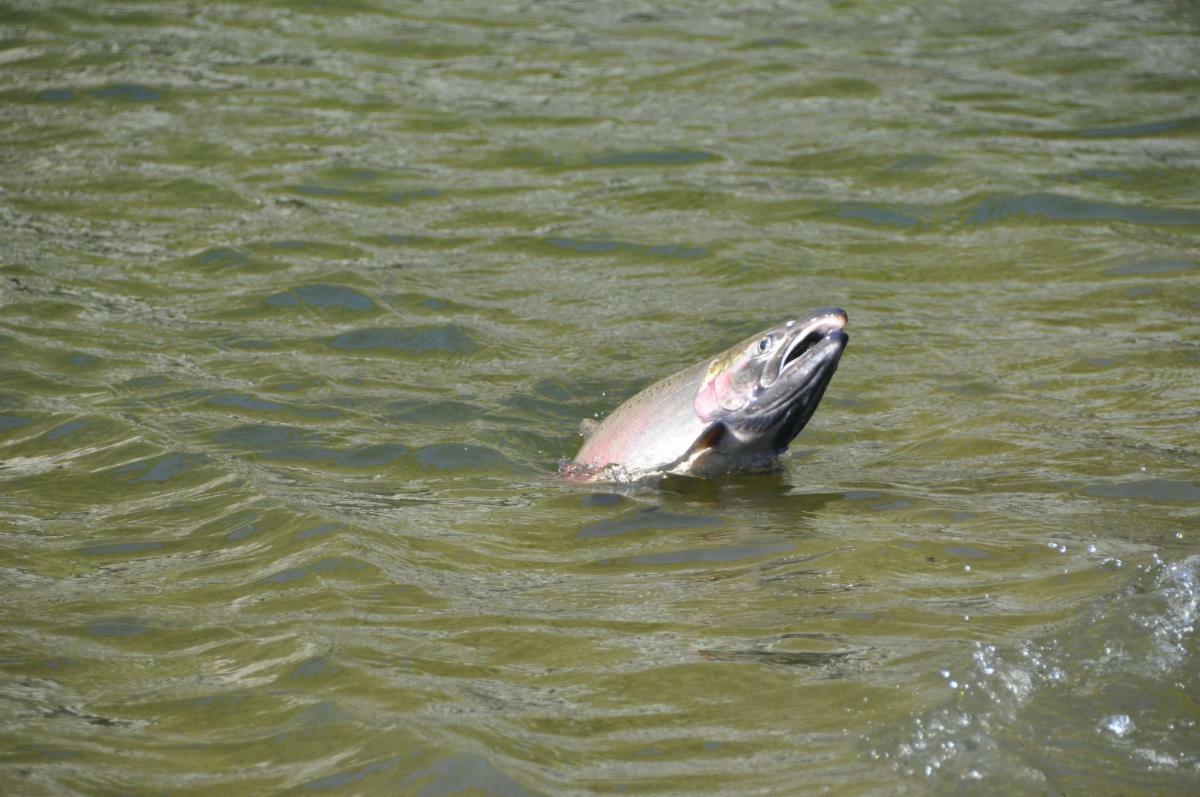Fish Report for 1-30-2024
Coho in Crisis Can this Sensitive Salmon be Saved?

by FISHBIO
1-30-2024
Appearing in evolutionary records as early as the icy Pleistocene epoch, Oncorhynchus kisutch – better known as coho or “silver salmon” – have swum Earth’s rivers for millions of years. Currently, this anadromous salmon species is found in watersheds along the Pacific Coast from Alaska all the way to Central California. During their typical 3-4 year lifespan, a coho completes the journey from their natal streams out to the deep blue ocean, and back to freshwater streams again to spawn as an adult. While making this incredible trip, coho navigate through multiple habitat types and brave a multitude of threats to their survival. Unfortunately for coho, compounding environmental stressors have depleted populations to just a fraction of their historical numbers, landing the species a long-standing position on the Endangered Species list. Coho are further classified into seven distinct population groups called evolutionarily significant units (ESUs) – four of which are protected under the Endangered Species Act (ESA). Two of these ESUs are located in California: the Central California Coast (CCC) ESU, which was listed as endangered in 1996; and the Southern Oregon/ Northern California (SONCC) ESU, which was listed as threatened in 1997.
If you are lucky enough to encounter one of these salmon in wild streams, you’ll have to look closely to tell them apart from their other salmonid relatives. Juveniles sport dark vertical parr marks along their bodies and distinct orange fins with frosty-white tips, while spawning adults have white coloration around their nostrils and inside their mouths, and don deep maroon and green watercolor-esque swatches along their sides. Despite striking looks, coho are quite a sensitive species, especially when met with modern freshwater stream conditions that deviate from the conditions they adapted to over millions of years. These salmon require streams with cool temperatures and estuaries that remain connected with the ocean during outmigration periods, as well as complex stream habitats of riffles, pools, and floodplains to support adult spawning and juvenile rearing. However, due to increasing human alteration of the landscape and damming of rivers for hydropower over the past two centuries, coho have been lost from half of the streams in California where they historically occurred.
In the nineteenth and twentieth centuries, increased timber and farming activity in coho habitat streamlined naturally braided channels, and it often required the construction of roads and culverts through pristine watersheds to allow vehicle and equipment access.This activity eroded healthy riverbanks, decreased channel complexity, reduced natural riparian cover, and led to clogged or blocked streams that often prevented upstream migration. These early stressors combined with the effects of commercial overharvest were felt acutely beginning in the 1980s, as scientists and fishers alike watched coho escapement plummet. Throughout the following century, increased human water demand, drought conditions, and dam construction paired with the increasing effects of climate change resulted in decreases in stream flows and warmer water temperatures that have severely impacted natural coho reproduction. A myriad of threats follow these sensitive salmon from out at sea into headwater streams, and unfortunately contribute to declining numbers in several coho ESUs.
Both state and federal recovery plans for coho have existed since the early 2000s, and these include the implementation of captive rearing programs and regulatory enforcement of protections for the species and for the habitats it needs to survive, but progress remains slow. An ESA mandated five-year review of the species was conducted in 2023, and determined that CCC coho populations in particular remain far below target numbers. The number of adults returning to spawn in the SONC ESU each year are estimated to be less than 5,000, while numbers in the CCC unit remain in the low hundreds. Luckily for coho, agencies like National Ocean and Atmospheric Administration (NOAA) Fisheries and their partners are hard at work monitoring spawner return, maintaining hatchery breeding programs, restoring complex in-stream habitat, removing barriers to migration, and increasing streamflow and floodplain access in salmon-bearing streams throughout their range. Just last year in Washington, a small story of success occurred for coho. After being declared overfished in 2018, the Snohomish coho stock was rebuilt to sustainable levels thanks to habitat restoration efforts and decreased catch limits in the area– demonstrating that with time and effort, positive outcomes from coho-focused conservation actions are possible. Going forward, more inter-agency collaborations, private landowner partnerships, and watershed-wide protections will be pivotal to conserving and recovering endangered coho populations.
FISHBIO is a dedicated group of research scientists, engineers, and technicians that specialize in counting, tracking, and analyzing trends in fish and wildlife populations throughout the world. An expert staff, technical capacity, and state-of-the-art equipment make FISHBIO a trailblazer in aquatic research. For more information, please visit FISHBIO.com
Photos
More Reports
You Are What You Eat: Decoding Diet Differences Between Green and White Sturgeon
San Francisco Bay
1-22-2024
Understanding an animal’s diet plays a key role in developing effective conservation and management strategies. Biologists typically collect data on...... Read More

Website Hosting and Design provided by TECK.net


